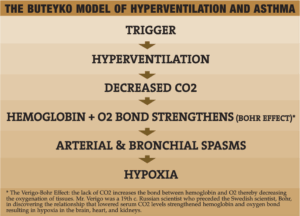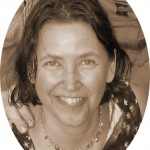Treatment for Asthmatic Children
Sussanna C. Czeranko, ND
Parents of asthmatic children only know the heart wrenching, frightening helplessness that comes when your child cannot breathe and the hospital is located miles away. Children dying from asthma is real. There are over 400 pediatric deaths from asthma annually in the U.S. We know a lot about who is affected by asthma, about its economic impact on our health care systems, and about how pharmaceutical use in this epidemic is increasing.
The prevalence of asthma in North America is increasing for all age, sex and racial groups, despite new pharmaceuticals arriving to save the day.
In 1998/99 10.7% of children and teens were diagnosed with asthma in Canada.
More than 4.8 million American children have asthma, which accounts for a third of all pediatric emergency visits.
The prevalence is higher among male children but more girls die from asthma than boys.
In the U.S, asthma accounts for over 5500 deaths annually (over 400 being children).
Asthma is the number one reason for school absenteeism, total combined over 10 million school days.
What is most alarming is that 80 – 90% of children who develop asthma are under the age of five.
Asthma is a combination of 3 physiological events occurring usually simultaneously:
1. bronchospasm
2. swelling of the membranes lining the airways narrowing them
3. increased mucus production
When the airways narrow, spasm and become blocked by mucus, the terrifying feeling of breathlessness causes the asthmatic to breathe as deeply and as fast as possible. Attempting to breathe in as much air as we can when we can’t breathe is a natural response. However, the rebound effect is that we over-breathe. Ever since the 18th century, when oxygen was discovered as the bearer of life, and carbon dioxide as nothing more than a waste gas needing to be exhaled, we have over time established in our human consciousness strong associations that breathing in more is good for us. Essentially, the belief that oxygen and carbon dioxide form a kind of duality in which oxygen is seen as good and carbon dioxide as bad for our health has persisted since the 18th century. Historically, however, scientists such as Haldane (1905) would occasionally recognize that both O2 and CO2 contribute to the dynamics of health. Buteyko, a Russian medical scientist, certainly did.
In 1951, this young Russian medical intern came to conclusions different from the mainstream after being consigned to a research study observing terminally ill patients and their respiratory patterns. Konstantin Buteyko noted that when people were about to die, their breathing rate and the depth of their breathing increased. He was able to predict the time of their death based upon their breathing pattern. In any case, he spent 45 years studying the impact that breathing had on health and observed over 150 diseases related to people over-breathing or hyperventilating. In his view, asthma was induced by over-breathing and this conclusion lies at the core of Buteyko’s theory and therapy for asthma. Other diseases such as hypertension, type I diabetes, panic attacks, sleep apnea, endometriosis, etc., were alleviated with his breathing method. Even snorers stop snoring after learning the breathing exercises.

While medicine categorizes people into different types of asthma: e.g. exertional, emotional, environmental, allergic, non-allergic and idiopathic, Buteyko disregards these labels and addresses the cause of asthma. Each asthmatic has her unique stimulus for asthmatic symptoms. The “minute volume” which measures lung ventilation (i.e. the litres of air breathed per minute in a healthy person averages 4 – 6 litres per minute). Studies show that asthmatics can breathe on average 14 litres per minute which is enough for 2 to 4 people.
Before I began to study the Buteyko approach in Canada and in the United Kingdom, I would look at diet diaries, physical activities, presence of smokers in the home, environmental toxic exposures, and family history when considering strategies to deal with asthmatic patients. I taught my patients about changing their diets; taking care to not overdo it with exercise; educated the family about second-hand smoke; ruled out phthalates, solvents, plastics, and chemicals in the home; taught diaphragmatic breathing exercises; prescribed glutathione nebulizers, herbs and nutritional supplements. I did see results … sometimes.
After studying Buteyko, I now look at how the patient is breathing and correct it with simple breathing exercises. My understanding of respiration was turned inside out. Carbon dioxide was not a waste gas but essential for the regulation of many systems in our bodies. Rather than teaching patients to take deep breaths, the Buteyko method teaches patients to breathe less. My clinical experience to date verified for me that the exercises can be taught to a 3 year old just as easily as to an adult, with astounding outcomes.
 Training patients in the Buteyko approach is didactic and interactive. Buteyko classes, lasting 1.5 hours each, take place over 5 to 6 days. Parents are encouraged to accompany their children during their sessions. Exercises are taught to the participants and practiced between the sessions. By the end of the week, asthmatic symptoms are greatly reduced.
Training patients in the Buteyko approach is didactic and interactive. Buteyko classes, lasting 1.5 hours each, take place over 5 to 6 days. Parents are encouraged to accompany their children during their sessions. Exercises are taught to the participants and practiced between the sessions. By the end of the week, asthmatic symptoms are greatly reduced.
One of the first studies conducted outside of Russia took place in Australia in 1994-5. Thirty-nine severely asthmatic people were divided into two groups. One group was taught Buteyko breathing exercises and the placebo group was given general asthma education, taught relaxation exercises and abdominal breathing. After 6 weeks, the Buteyko group reduced their use of inhalers by 90% and the placebo group by 5%. At 3 months, the Buteyko group remained at 90% reduction of inhalers while the placebo group increased their use by 9%. Steroid use was reduced by 49% and the placebo group remained the same as before the trial. Eighty percent of asthmatic symptoms were alleviated in the Buteyko group, whereas the placebo group had exacerbations of symptoms.
The Buteyko breathing method is new to North America. Less than a dozen practitioners exist. For asthmatic children who learn the method, tremendous improvements in their health are experienced within the very week of learning the method. Relieved parents leave Buteyko courses knowing that their children have methods to control their asthma.
My introduction to Buteyko was completely accidental. I was invited to an introductory lecture and was curious about the new Russian breathing technique. I have taught hundreds of patients diaphragmatic breathing with positive results. And then, I personally experienced the traumatic effects of a serious head-on automobile collision. I had chronic, debilitating fatigue and brain injuries that curtailed my ability to continue a full time naturopathic practice. Having tried everything that naturopathy and other therapies had to offer, I persisted with Buteyko exercises. The missing pieces fell into place. Buteyko is most often associated with asthma, but from my personal experiences, Buteyko has much to offer our modern addiction to stress. Hyperventilation underlies every condition and disease stemming from stress.

Sussanna C. Czeranko, ND graduated from CCNM in 1994 following studies in kinesiology at the University of Waterloo. She has completed extensive training in Homeopathy, the Bowen Technique, Hydrotherapy, the Hendricks’ Method of Body Centered Therapy and specialized post-graduate Environmental Toxicity and Detoxification training. Sussanna and her partner live in the countryside with a huge array of animals including a 15 foot tall guardian bear. A passion for sharing her healing skills and interests has recently been galvanized by recovering from a serious car accident. She has written and lectured from the Yukon to Quebec on many health issues, and has been a past Board member of the Canadian Naturopathic Association and at CCNM.
Classes in the Buteyko Method will soon be available and complement naturopathic practice powerfully.

